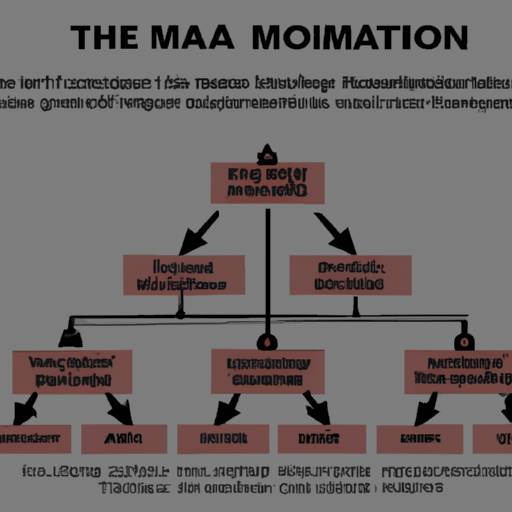The House Select Committee on Assassinations was established with the sole purpose of uncovering the truth behind this national tragedy. In this blog post, we will dive into the committee’s work, exploring the extent of their investigation and the steps they took to piece together the puzzle. Lets unravel the efforts made to shed light on one of the most significant events in American history.
Establishment of the House Select Committee on Assassinations
In the aftermath of President John F. Kennedy’s assassination in 1963, questions and doubts loomed over the official investigation. Public demand for further scrutiny into the tragic event grew with each passing year. However, it was not until the late 1970s that the political climate finally allowed for the establishment of the House Select Committee on Assassinations. This blog section explores the circumstances that led to the creation of this congressional committee and sheds light on its importance in the pursuit of truth.
Public Demand for Investigation
- The Warren Commission, which was tasked with investigating JFK’s assassination, concluded in 1964 that Lee Harvey Oswald acted alone.
- However, growing skepticism among the public and conspiracy theories challenged the Commission’s findings.
- Numerous books and articles were published, each presenting alternative theories and raising questions about the official narrative.
- Concerns regarding the thoroughness and transparency of the initial investigation led to a groundswell of support for further inquiry.
The Political Climate
- In the 1970s, public trust in government institutions had eroded due to various scandals and controversies, such as Watergate.
- This climate of mistrust, coupled with the persistence of doubts surrounding JFK’s assassination, created a favorable environment for further investigation.
- Politicians recognized the need to address these concerns and restore public faith in the government’s ability to uncover the truth.
Establishment of the House Select Committee on Assassinations
- In 1976, Congress passed the JFK Assassination Records Collection Act, requiring all relevant documents to be made public.
- The release of these documents reignited public interest in the case and further fueled demands for a thorough investigation.
- The following year, the House Select Committee on Assassinations was formed, with the explicit mandate to investigate the assassinations of both JFK and Martin Luther King Jr.
- The committee was composed of members from the House of Representatives and was granted broad investigative powers, including the ability to issue subpoenas.
- Its primary objective was to determine whether there was evidence of conspiracy in both assassinations.
Key Achievements of the Committee
- The House Select Committee on Assassinations conducted an extensive investigation that lasted from 1977 to 1979.
- The committee reviewed thousands of documents, interviewed numerous witnesses, and analyzed acoustic evidence.
- One significant finding of the committee was that there was a high probability of a conspiracy in JFK’s assassination, contrary to the Warren Commission’s conclusion.
- The committee also made recommendations for improving future investigations and protecting national security.
- Its work contributed to the passage of the President John F. Kennedy Assassination Records Collection Act of 1992, which mandated the release of additional documents.
Investigative Techniques and Methods
When it comes to conducting an investigation, it is crucial to employ effective techniques and methods to gather information and uncover leads. In this blog post, we will delve into the various investigative techniques and methods utilized by the committee in its pursuit of the truth. By understanding these approaches, we can gain insight into the complexity and meticulousness required in any investigation.
Final Report of the House Select Committee on Assassinations
$30.94
The Warren Commission Report: The Official Report of the President's Commission on the Assassination of President John F. Kennedy
JFK: The Book of the Film (Applause Books)
$14.98
Forensic Analysis: Unveiling Hidden Clues
Forensic analysis plays a pivotal role in any investigation, enabling investigators to uncover hidden clues and piece together a comprehensive understanding of the situation. This technique involves the examination of physical evidence, such as fingerprints, DNA, and trace materials, to establish connections and identify potential suspects. Some key benefits of forensic analysis include:
- Objective Evidence: Forensic analysis provides concrete evidence that is grounded in science, reducing the risk of bias or subjective interpretation.
- Linking Individuals to the Scene: By analyzing fingerprints, DNA, or other trace evidence, investigators can establish a connection between individuals and the crime scene, aiding in the identification of suspects.
- Reconstructing Events: Through careful examination of physical evidence, investigators can reconstruct the sequence of events, shedding light on what transpired.
Interviews: Unveiling Testimonies and Perspectives
Interviews are a critical component of any investigation, allowing for the collection of testimonies and perspectives from witnesses and experts. These interviews serve as an invaluable source of information, providing insights that can potentially corroborate or challenge existing evidence. Key points regarding interviews include:
- Gathering First-hand Information: Interviews enable investigators to gather first-hand information about the incident or situation, potentially revealing new leads or shedding light on obscure details.
- Identifying Inconsistencies: By comparing statements from different individuals, investigators can identify inconsistencies or contradictions, helping them assess the veracity of the information provided.
- Assessing Credibility: An experienced investigator can assess the credibility of witnesses or experts through interviews, ensuring that the information gathered is reliable.
Examination of Documentary Evidence: Tracing the Paper Trail
Documentary evidence, such as contracts, emails, financial records, and other relevant documents, can provide crucial insights into an investigation. The examination of these documents allows investigators to trace a paper trail, uncovering connections, and establishing timelines. Here are some key benefits of the examination of documentary evidence:
- Verifiability and Authenticity: Documentary evidence can be verified and authenticated, providing reliable information that can be presented in court or used to support other findings.
- Establishing Motive and Intent: By examining relevant documents, investigators can gain insights into the motives and intentions of individuals involved, providing a deeper understanding of the case.
- Identifying Patterns or Discrepancies: Careful examination of documentary evidence may reveal patterns or discrepancies that can unveil hidden connections or irregularities, leading to further investigation.
In conclusion, a successful investigation relies on a combination of meticulous techniques and methods. Forensic analysis, interviews, and the examination of documentary evidence are just a few of the tools investigators employ to gather information, uncover leads, and ultimately seek the truth. By understanding these techniques, we can appreciate the complex and systematic approach required to conduct a thorough investigation.
Findings and Conclusions
The House Select Committee on Assassinations conducted a thorough investigation into the assassination of President John F. Kennedy. After careful examination of the evidence, the committee reached several key findings and conclusions that shed new light on this tragic event.
Determination of a Probable Conspiracy
- The committee concluded that a single gunman, Lee Harvey Oswald, was not solely responsible for the assassination of President Kennedy.
- Based on acoustic evidence, the committee determined that there were high probabilities of at least four shots being fired during the assassination.
- The committee’s analysis indicated that the additional shots likely came from a location other than the Texas School Book Depository, where Oswald was positioned.
Identification of Potential Individuals Involved
- The committee identified several potential individuals who may have been involved in the plot to assassinate President Kennedy.
- While no direct evidence linking these individuals to the conspiracy was found, their connections and suspicious activities warranted further investigation.
- Some of the notable individuals identified included mobsters, anti-Castro Cuban exiles, and members of the intelligence community.
Mobsters’ Involvement
- The committee uncovered evidence suggesting the possible involvement of mobsters in the assassination plot.
- It was revealed that mobsters had expressed their displeasure with President Kennedy’s administration and had the means to carry out such an operation.
- Although no conclusive proof was found, the committee believed that the mobsters may have played a role in the conspiracy.
Anti-Castro Cuban Exiles’ Role
- The committee also examined the potential involvement of anti-Castro Cuban exiles in the assassination.
- It was discovered that some exiles had ties to organized crime and had a strong motive to see President Kennedy removed from power.
- While the committee did not establish a direct connection, it considered these individuals as potential participants in the conspiracy.
Intelligence Community’s Knowledge
- The committee’s investigation raised questions about the knowledge and actions of the intelligence community regarding the assassination.
- It was revealed that certain intelligence agencies had information about threats against President Kennedy’s life but failed to act on them adequately.
- The committee concluded that the lack of proper response by the intelligence community could have contributed to the success of the assassination plot.
Importance of the Findings
The findings and conclusions of the House Select Committee on Assassinations are significant for several reasons:
- They challenge the official account that Lee Harvey Oswald acted alone in the assassination of President Kennedy.
- The identification of potential individuals involved in the plot opens new avenues for further investigation and understanding of the events surrounding the assassination.
- These findings highlight the need for continued scrutiny and analysis of historical events to ensure a complete understanding of the truth.
In conclusion, the House Select Committee on Assassinations determined that there was a probable conspiracy behind President Kennedy’s assassination. While not definitively proving the identities of those involved, the committee’s findings and conclusions provide valuable insights and raise important questions that continue to shape our understanding of this pivotal moment in history.
Legacy and Impact
The House Select Committee on Assassinations (HSCA) was established in 1976 with the purpose of investigating the assassinations of President John F. Kennedy and civil rights leader Martin Luther King Jr. This blog post will delve into the committee’s legacy and the impact it had on subsequent investigations and public perception of JFK’s assassination.
Advancements in Investigative Techniques
One of the key legacies of the HSCA was its use of advanced forensic and investigative techniques. The committee employed advancements in ballistics, acoustics, and photographic analysis to re-examine the evidence surrounding JFK’s assassination. This approach introduced new methods of investigation that have since been adopted by law enforcement agencies and forensic experts worldwide.
Uncovering the Truth: The House Select Committee on Assassinations and JFK’s Assassination
In conclusion, this blog post has shed light on the House Select Committee on Assassinations’ investigation into JFK’s assassination. The committee’s work was integral in unearthing new evidence and influencing public discussion. Moving forward, it is important to continue researching and analyzing this historic event to fully comprehend its intricacies.
Frequently Asked Questions about The House Select Committee on Assassinations
How did the HSCA’s investigation impact public perception of JFK’s assassination?
The HSCA’s investigation, also known as the House Select Committee on Assassinations, had a significant impact on public perception of JFK’s assassination. Established in 1976, the committee sought to reexamine the evidence and determine whether there was a conspiracy involved in the assassination of President John F. Kennedy.
The HSCA’s investigation lasted for two years and concluded in 1979. One of its most notable findings was the conclusion that there was a high probability of a second gunman involved in the assassination, supporting the theory of a conspiracy. This finding directly contradicted the Warren Commission’s report, which had previously concluded that Lee Harvey Oswald acted alone.
The HSCA’s conclusion that there was likely a conspiracy sparked public interest and reignited debates about who might have been involved in JFK’s assassination. It also led to a resurgence of conspiracy theories surrounding the event. The committee’s findings, along with the subsequent media coverage and public discussions, contributed to a shift in public perception and increased skepticism towards the official account of the assassination.
However, it is important to note that the HSCA’s findings were not universally accepted. Some critics argued that the committee’s investigation was flawed and that its conclusions were not supported by sufficient evidence. Nevertheless, the HSCA’s investigation played a significant role in shaping public perception and fueling ongoing debates about JFK’s assassination.
What was the purpose of the House Select Committee on Assassinations (HSCA) investigation into JFK’s assassination?
The purpose of the House Select Committee on Assassinations (HSCA) investigation into JFK’s assassination was to reexamine the evidence and circumstances surrounding the assassination of President John F. Kennedy in 1963. The committee was formed in 1976 to address lingering doubts and questions regarding the official investigation conducted by the Warren Commission in 1964.
The HSCA aimed to conduct a thorough review of all available evidence, including witness testimonies, forensic analysis, and other pertinent information. Their goal was to determine if there were any additional conspiracies or factors involved in the assassination beyond what the Warren Commission had concluded.
The committee’s investigation lasted for about two years, during which they interviewed numerous witnesses, examined thousands of documents, and utilized the expertise of forensic and scientific professionals. Ultimately, the HSCA concluded in its final report that President Kennedy was likely assassinated as a result of a conspiracy, although they did not identify any specific individuals or organizations responsible.
While the HSCA investigation did not definitively prove the existence of a conspiracy, it did contribute to the ongoing public debate and speculation surrounding JFK’s assassination. The committee’s work also prompted the release of previously classified materials related to the case, allowing for further examination and analysis by researchers and historians.











